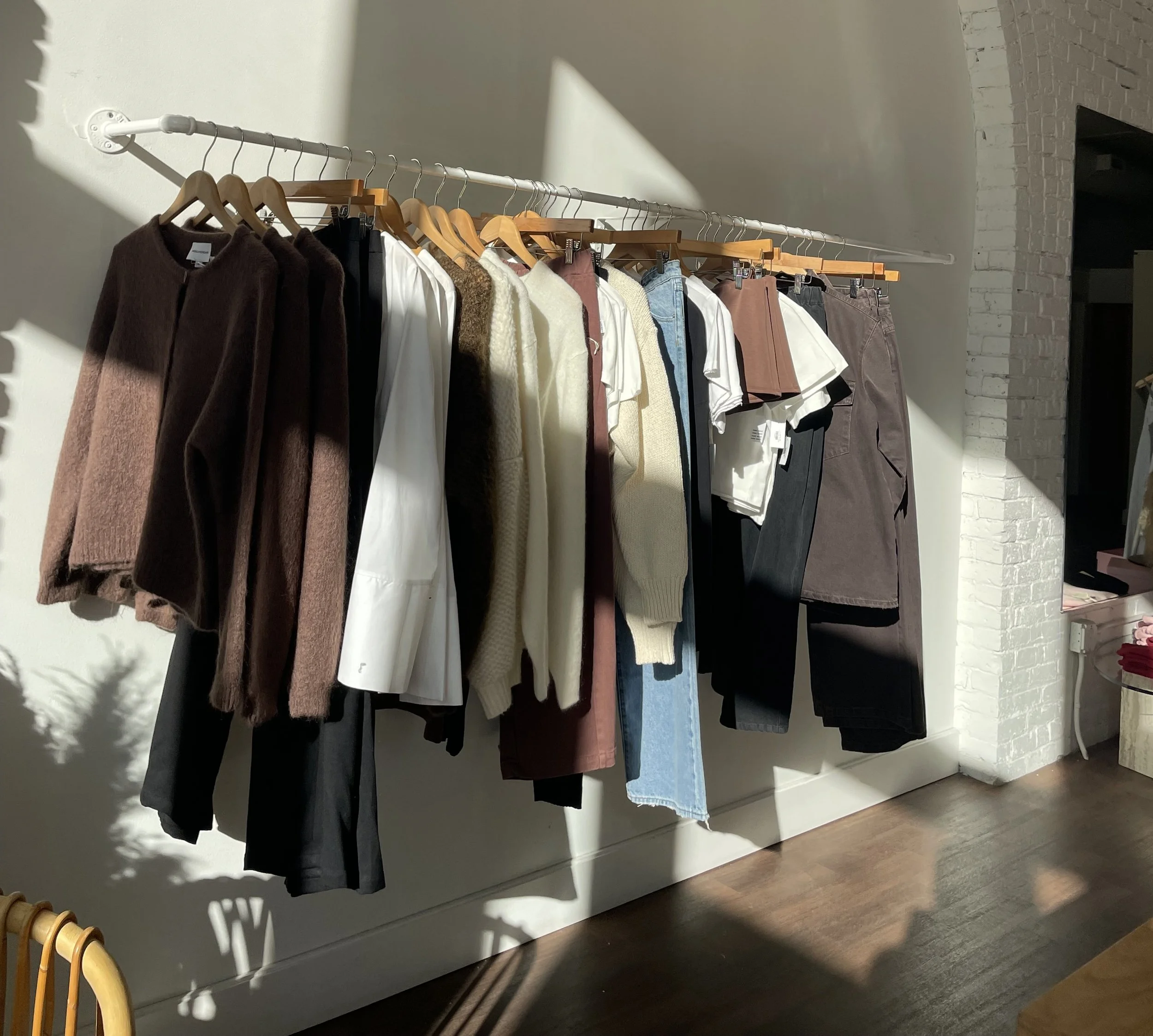Why Natural Materials Matter (Your Polyester Yoga Pants Are Blocking Your Practice)
Your sports bra never quite dries. Your leggings trap yesterday's workout. Synthetic materials don't just block moisture—they block the part of you that needs to connect.
Natural materials like cotton, wool, linen, and silk allow your skin to breathe and regulate temperature naturally, while synthetic materials like polyester create barriers that trap moisture, heat, and bacteria. Natural fibers work with your body's biology. Synthetics work against it. Studies show synthetic underwear correlates with higher rates of infections and disrupted vaginal pH. What touches your skin affects all of you—not just physically.
your clothes are making choices for you
Your sports bra never quite dries. Yesterday's workout still lives in your leggings. You wake up feeling flat despite eight hours in those moisture-wicking sheets.
What if it's not you? What if it's what you're wearing?
Synthetic materials do more than trap moisture. They create barriers between you and everything else.
what polyester actually does
Petroleum-based fabrics wrap you in plastic. Your skin—your largest organ—can't breathe properly. Something gets trapped. The part of you that needs to connect can't reach through the barrier.
You're wearing oil derivatives, then wondering why you feel stuck.
Synthetic materials release microplastics that accumulate in your organs. Trap moisture and bacteria in ways natural fibers don't. Block your skin's ability to regulate temperature. Create a layer between you and the world that affects all of you—physically, yes, but not only physically.
Women who switch to organic cotton underwear often report fewer UTIs, more regulated cycles, better vaginal health. Your body knows what the wellness industry won't admit: plastic doesn't belong there.
what came before
Before petroleum, before plastics, before "moisture-wicking technology"—humans wore materials that came from life. Cotton from plants. Wool from sheep. Silk from silkworms. Linen from flax.
Maasai warriors wore red ochre and cowhide. Materials that protected while allowing skin to breathe and connect with their environment. Indian Ayurvedic tradition prescribes specific materials for different constitutions: cotton for cooling, silk for balance, wool for grounding.
What touches your skin matters. They understood this without needing studies to prove it.
how we got here
Industrial systems needed cheap, fast, scalable materials. Natural fibers require crops, seasons, care, time. You can't rush cotton or force linen to grow faster.
Synthetics could be mass-produced from oil. Endless. Immediate. Profitable.
Profit over body. Production over biology. Progress measured in speed and scale, not in what actually serves you.
Now you're wrapped in plastic every day and wondering why you feel disconnected from everything—including yourself.
the wellness industry's contradiction
Your $200 "performance" leggings? Made from the same petroleum destroying the planet. That "sustainable" athletic wear? Often just recycled plastic bottles—still plastic, still creating barriers.
The wellness industry sells you synthetic everything while preaching connection to nature. You do yoga in plastic pants on a plastic mat wearing a plastic sports bra, then wonder why grounding feels impossible.
You're not failing at the practice. You're practicing through a barrier.
natural materials as practice
Cotton breathes with you through temperature changes. Wool regulates heat even when wet. Linen becomes softer and more yours with every wash. Silk maintains your hair's moisture while you sleep.
These aren't just practical differences. Materials that came from life remember they breathe, regulate, change with seasons. Your body—and the rest of you—recognizes this.
When you sleep in linen sheets, you sleep differently. When you practice in cotton, your sweat becomes part of the practice instead of trapped against your skin. When you wear wool in winter, you're wrapped in warmth that understands cold.
These materials collaborate with you instead of creating barriers.
making the switch
You don't need to throw everything out tomorrow. Start here:
Underwear first. Eight to twelve hours a day against your most sensitive skin. This is where synthetic barriers do the most damage.
Bedsheets next. You spend a third of your life there. Natural materials let you rest differently.
Workout clothes when you can afford it. Where moisture, heat, and barrier effects are most intense.
One natural fiber sweater that will last decades instead of three synthetic ones that pill after six months.
Natural materials cost more upfront. But polyester costs you in ways you can't calculate—hormone disruption, that persistent flatness, the disconnection you can't quite name.
the shift
When you choose cotton over polyester, wool over acrylic, linen over nylon—you're choosing materials that breathe with you over materials that trap you.
Materials that came from life. That grew. That understand what it means to move through seasons.
Your ancestors wore materials that connected them to the earth. Industrial systems convinced you plastic was progress.
The rash that won't clear. The mysterious flatness. The yoga practice that doesn't quite land. That's all information.
Your body is trying to tell you: the barrier matters.
The shift might start with your underwear drawer.
Look for these materials
〰 Cotton - Breathable, affordable, works for most climates
〰 Linen - Gets softer with washing, excellent for heat
〰 Wool - Regulates temperature, naturally antimicrobial
〰 Silk - Gentle on hair and skin while you sleep
〰 Tencel/Lyocell - Sustainable wood-based fiber, smooth texture
〰 Bamboo and hemp - Sustainable alternatives with natural softness
Avoid these materials
◗ Polyester, nylon, acrylic - Petroleum-based synthetics
◗ "Moisture-wicking" blends - Usually plastic
◗ "Performance fabrics" - Marketing term for synthetic materials
◗ Microfiber - Sheds plastic particles with every wash
And remember: One good piece lasts. Three cheap ones don't.



